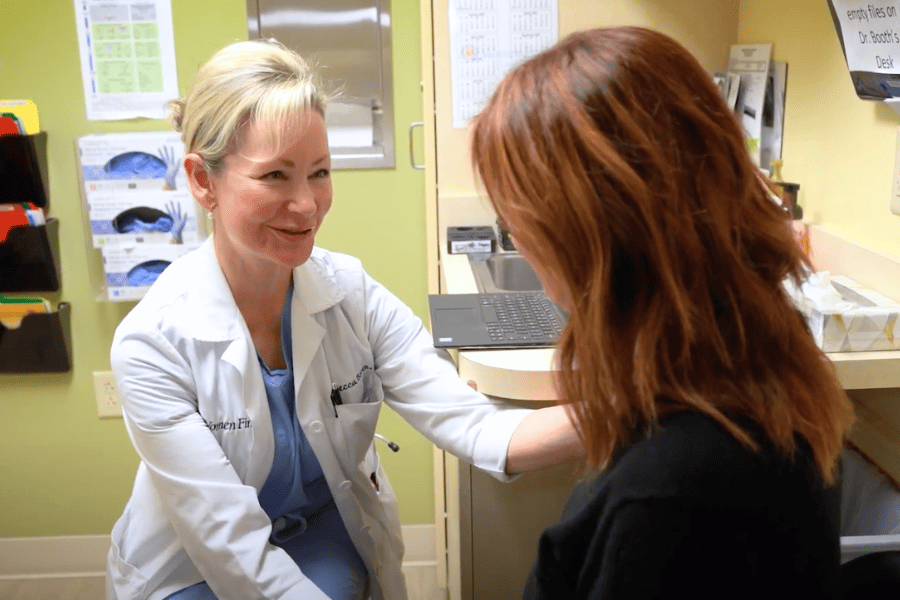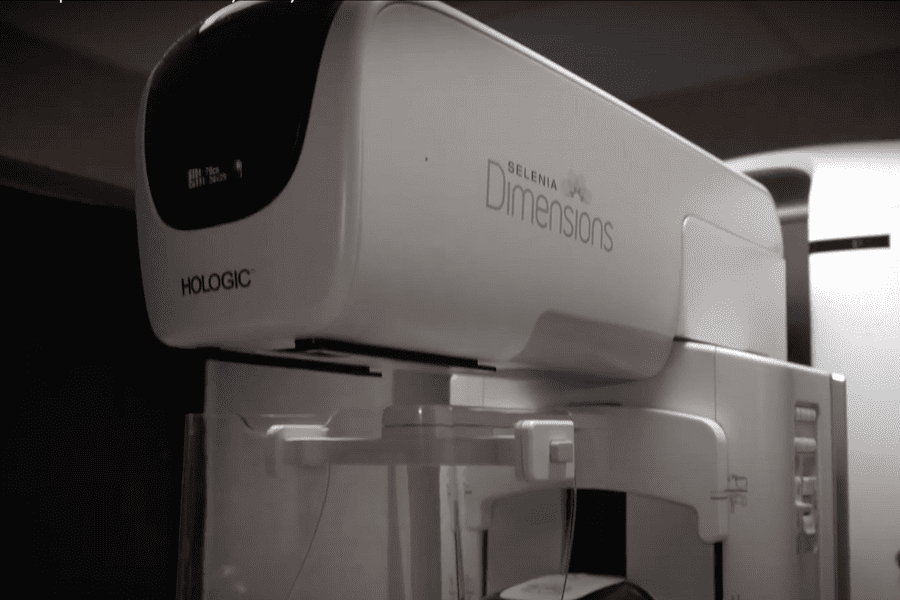“Mammograms are very quick and only take a few minutes. I have very few complaints from patients on mammograms”, shares Rebecca Booth, M.D., Board-Certified in Obstetrics & Gynecology at Women First of Louisville.
So, why are regular screening mammograms so important? Breast cancer is a common and potentially life-threatening disease that affects millions of women worldwide. Detecting breast cancer in its early stages significantly increases the chances of successful treatment and improved outcomes. One of the most effective screening tools for breast cancer is a mammogram. Here, we explore what a mammogram is, its importance in breast health, the procedure involved, and its role in the early detection of breast cancer. By understanding the ins and outs of mammography, we can make informed decisions about breast health and take proactive steps toward early detection and intervention.
What is a Mammogram?

Mammograms play a vital role in breast health for several reasons:
- Early detection: Mammograms can identify breast cancer early, even before physical symptoms are present. Mammograms can detect breast cancer a few years before a lump or mass is felt on exam
- Screening for asymptomatic women: Mammograms are used as routine screening tools for women who have no signs or symptoms of breast cancer
- Monitoring and follow-up: Mammograms are used to monitor changes in breast tissue over time, allowing healthcare professionals to track any potential abnormalities and guide appropriate treatment plans
- Diagnostic tool: Mammograms are also used for diagnostic purposes when a woman experiences symptoms such as breast lumps, pain, or nipple discharge
The Mammogram Procedure

- Preparation: Before the mammogram, it is important to inform the technologist about any breast changes, previous breast surgeries, or implants. On the day of the exam, it is recommended to avoid using deodorants, powders, or lotions on the chest area, as they can interfere with the image quality.
- Positioning and Compression: The technologist will position the patient in front of the mammography machine during the mammogram. The breast is then placed on a platform and firmly compressed between two plates. Compression helps spread out the breast tissue and obtain clearer images.
- Image Acquisition: The technologist will take breast images from different angles. Two standard views are typically obtained for each breast: the craniocaudal (CC) and mediolateral oblique (MLO) views. These images provide a comprehensive picture of the breast tissue and any abnormalities.
- Additional Views and Spot Compression: In some cases, different views or spot compression may be necessary to examine a specific area of concern closely.
- Radiologist Interpretation: A radiologist will examine the images once the mammogram is complete. Radiologists are physicians trained to detect signs of breast abnormalities, such as masses, calcifications, or architectural distortions. Further diagnostic tests, such as ultrasound or biopsy, may be recommended if any concerning findings are identified.
Taking Control of Your Breast Health

A mammogram is a non-invasive imaging procedure that allows healthcare professionals to capture detailed images of the breast tissue, enabling the identification of any abnormalities or changes that may indicate the presence of breast cancer. Regular mammograms are crucial in maintaining breast health, as they can detect cancer at its earliest stages, often before physical symptoms appear. Early detection leads to improved outcomes.
Taking control of your breast health is essential. By scheduling regular mammograms, you can actively participate in the early detection of breast cancer. Rebecca Booth, M.D., Board-Certified in Obstetrics & Gynecology at Women First of Louisville says, “We recommend breast imaging starting at age 40 with a woman who doesn’t have a high-risk situation.”
Remember, early detection is key in the fight against breast cancer. By taking the initiative to schedule regular mammograms, you are prioritizing your health and well-being. Don’t wait until symptoms appear, be proactive and make an appointment with Women First of Louisville today.
Together, we can make a difference in breast health. Let’s empower ourselves and take charge of our well-being. Schedule a mammogram and encourage the women in your life to do the same. Early detection saves lives, and by taking this important step, you are investing in a healthier future. Your breasts deserve the best care possible, and Women First of Louisville is dedicated to providing it.
